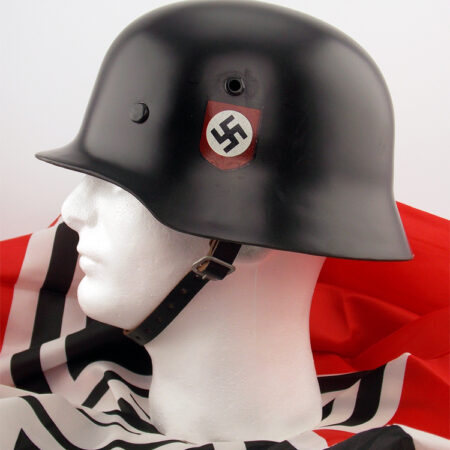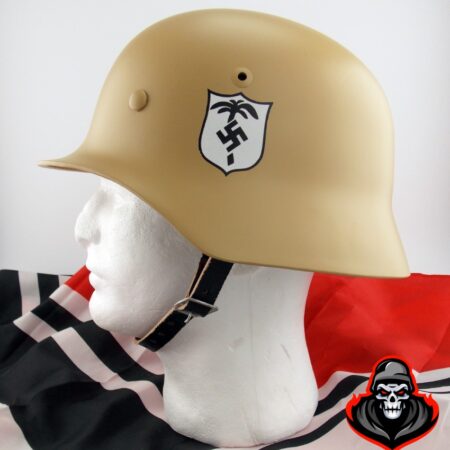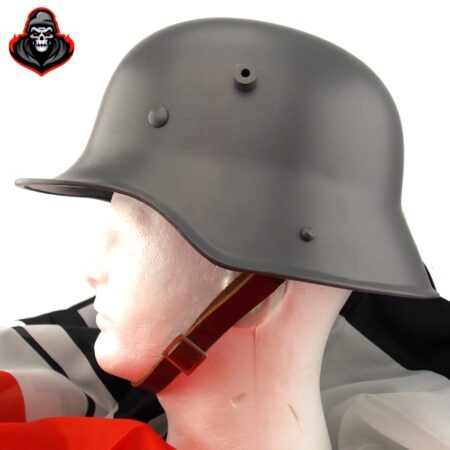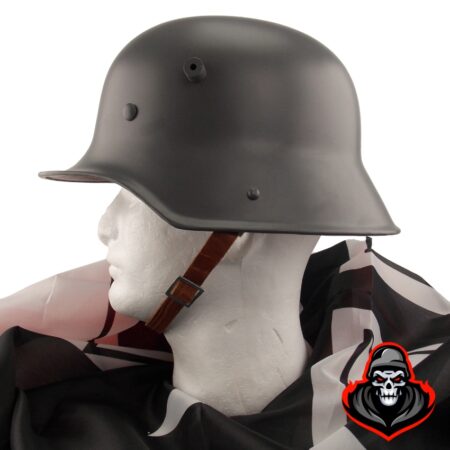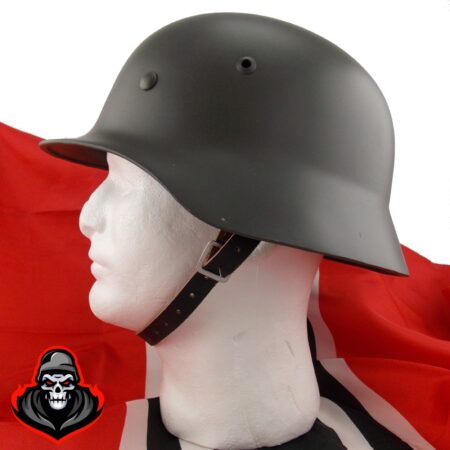Many people are familiar with the attempt which was made to assassinate Adolf Hitler by a cohort of German army officers led by Claus von Stauffenberg on the 20th of July 1944. The plan, if successful, would have led to a coup d’état, whereby the army would have seized power from the Nazis and endeavoured to end the Second World War. But there were many other efforts to assassinate Hitler between 1933 and 1945, which are comparatively less well-known. One of these was that attempted by Georg Elser at the Bürgerbräukeller, a large beer hall in Munich, on the night of the 8th of November 1939.
Georg Elser was born in Hermaringen in the province of Wurttemburg in southern Germany in 1903. He had an unstable family life, owing to his father’s alcoholism, and took up many factory jobs in his teenage years, before finally settling on carpentry as his trade. In the second half of the 1920s and throughout the 1930s he worked in several towns and cities throughout Germany before finally finding a long-term job at the Waldenmaier armament factory in Heidenheim in 1936.
It was while he was working at the Waldenmaier factory in late 1938 that Elser resolved to try to assassinate Hitler. The idea came to him having been in Munich on the 8th of November when the German Chancellor gave his annual address at the Bürgerbräukeller to commemorate the anniversary of the Beer Hall Putsch of 1923, when the Nazis had attempted to seize power in Munich. Elser’s motives were mixed. Politically he was a Communist, though hardly a highly committed one. Rather he seems to have set on his course out a mixture of political ideologies and also a general desire to simply kill the Nazi leader, Elser having formed the viewed that the course the country was on under Hitler’s leadership was perilous.
Having decided to eliminate the Nazi leader, Elser began plotting how to do so. His workplace provided the ideal environment for this. He began stealing material for explosives from the Waldenmaier factory in the weeks that followed. In the spring of 1939 he also found a job at the Vollmer quarry in Konigsbronn so that he could steal detonators and blasting cartridges from the worksite. By July he was testing prototypes of the bomb he intended to use. His plan was clear. To kill Hitler using explosives which he would plant at the Bürgerbräukeller in Munich to set off when Hitler gave his next annual address there on the 8th of November 1939.
By early August Elser was living in Munich. He spent the next weeks and months regularly visiting the restaurant of the Bürgerbräukeller and then hiding inside the building before it closed. Elser successfully smuggled himself inside the building at least 30 times between August and early November. During these clandestine visits he hollowed out a pillar behind the speaker’s rostrum on the main stage of the Bürgerbräukeller, where Elser knew Hitler would make his address from on the 8th of November. Within this he installed a secret chamber for the purposes of housing the explosives which Elser was building at his Munich residence during the day. Then on the night of the 1st and 2nd of November he installed the bomb.
Elser’s plan was precise and would have worked had it not been for circumstances beyond his control. The annual address by Hitler usually lasted two hours, but owing to the pressing requirements of the war Hitler elected to keep his speech in 1939 to just one hour in duration. Accordingly the Nazi leader ceased his diatribe and left the stage at 9.07pm, thirteen minutes before the detonator on Elser’s bomb was due to explode. When it did explode at 9.20pm Hitler was no longer in the Bürgerbräukeller, but there is little doubt that it would have killed the Nazi leader. The explosion caused enormous damage to the stage and hall, completely destroying one wall, killing eight people and injuring over sixty more.
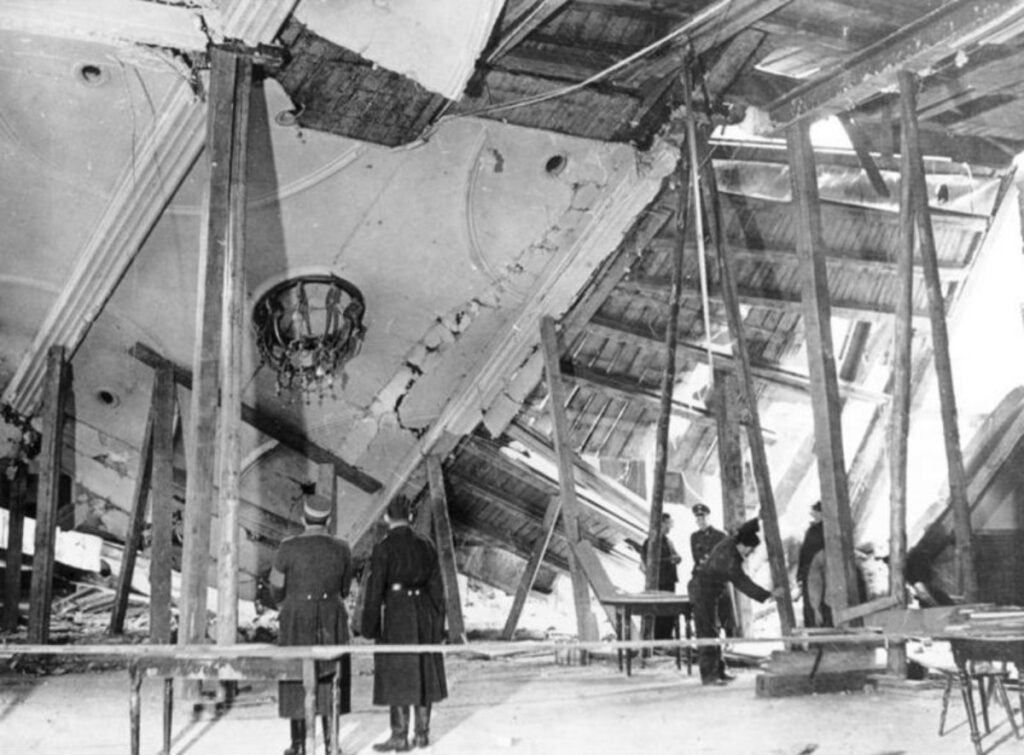
The assassination attempt having failed, a manhunt was now on to find who had sought to kill the German Chancellor. Elser, however, was no longer in Munich. He had left the city that morning and was making his way towards Switzerland. But, incredibly, he was already under arrest by the time the bomb exploded. At 8.45pm, just as Hitler was finishing his speech at the Bürgerbräukeller, Elser had been arrested approximately 25 metres from the Swiss border. Notes and sketches he had made in relation to the bombing were found on him. Thus, when, just before midnight, news reached the station he was being held at of a bombing at the Bürgerbräukeller earlier that night, Elser was immediately suspected and was transferred to Munich for questioning by the Gestapo.
Over the next several days in Munich evidence was assembled against Elser which seemed to prove to the authorities that he was the culprit. After several interrogations Elser signed a confession on the 15th of November and was transferred to Berlin. Here he was questioned extensively to try to determine if he had acted on his own, or if he was part of a wider conspiracy against the Nazi regime. He was tortured during these proceedings.
Yet this was just the beginning of many years of shocking treatment. Elser was held prisoner for five years in total, being repeatedly interrogated and tortured. Some of this involved the use of drugs and hypnosis, the Gestapo adamant that Elser had some political connections which they were determined to make him admit to. He was even made to reconstruct the bomb he had built in 1939. Eventually in 1941 Elser was moved to Sachsenhausen Concentration Camp some 35 kilometres north of Berlin. A trial was never held, though there were some talks amongst the German high command of holding a show trial for political purposes. He was transferred to Dachau Concentration Camp early in 1945 for this reason. Inadvertently this may have been why Elser was kept alive as long as he was. If it was, then it was also the reason why his execution was eventually decided upon. On the 5th of April 1945, with defeat in the war imminent, Hitler ordered the execution of Elser, a show trial now serving no purpose. Thus, on the 9th of April 1945 Georg Elser was executed at Dachau by firing squad. Had he lived for just three more weeks the man who came so close to assassinating Hitler in November 1939 and suffered such torment for his efforts, might have lived. Dachau was liberated on the 29th of April 1945.


